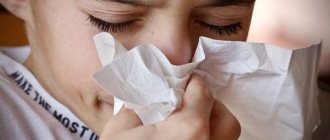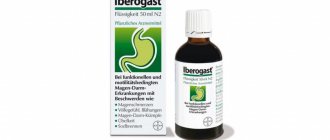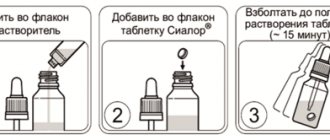Pharmacological properties
Pharmacodynamics
A competitive histamine antagonist, a metabolite of hydroxyzine, blocks histamine H1 receptors. Prevents the development and facilitates the course of allergic reactions, has antipruritic and antiexudative effects. Affects the early stage of allergic reactions, limits the release of inflammatory mediators at the “late” stage of the allergic reaction, reduces the migration of eosinophils, neutrophils and basophils. Reduces capillary permeability, prevents the development of tissue edema, relieves spasm of smooth muscles.
Eliminates skin reactions to the introduction of histamine, specific allergens, as well as to cooling (with cold urticaria). Reduces histamine-induced bronchoconstriction in mild bronchial asthma.
It has virtually no anticholinergic and antiserotonin effects.
In therapeutic doses it practically does not cause a sedative effect. The onset of the effect after a single dose of 10 mg of cetirizine is 20 minutes, lasts more than 24 hours. During the course of treatment, tolerance to the antihistamine effect of cetirizine does not develop. After stopping treatment, the effect lasts up to 3 days.
Pharmacokinetics
Rapidly absorbed from the gastrointestinal tract, the time to reach maximum concentration (TCmax) after oral administration is about 1 hour. Food does not affect the completeness of absorption (AUC), but prolongs TCmax by 1 hour and reduces the maximum concentration (Cmax) by 23% . When taken at a dose of 10 mg once a day for 10 days, the equilibrium concentration of the drug (Css) in plasma is 310 ng/ml and is observed 0.5–1.5 hours after administration. Plasma protein binding is 93% and does not change with cetirizine concentrations in the range of 25–1000 ng/ml. The pharmacokinetic parameters of cetirizine change linearly when administered at a dose of 5–60 mg. Volume of distribution – 0.5 l/kg.
In small quantities, it is metabolized in the liver by O-dealkylation to form a pharmacologically inactive metabolite (unlike other H1-histamine receptor blockers, which are metabolized in the liver with the participation of the cytochrome P450 system). Cetirizine does not accumulate. About 2/3 of the drug is excreted unchanged by the kidneys and about 10% in the feces.
Systemic clearance – 53 ml/min. The half-life (T1/2) in adults is 10 hours, in children 6–12 years old – 6 hours, 2–6 years old – 5 hours, 0.5–2 years old – 3.1 hours. In elderly patients, T1/2 increases by 50%, systemic clearance is reduced by 40% (decreased renal function).
In patients with impaired renal function (creatinine clearance below 40 ml/min), drug clearance decreases and T1/2 lengthens (for example, in patients on hemodialysis, the total clearance decreases by 70% and is 0.3 ml/min/kg , and T1/2 is extended by 3 times), which requires a corresponding change in the dosage regimen. It is practically not removed during hemodialysis.
In patients with chronic liver diseases (hepatocellular, cholestatic or biliary cirrhosis), an increase in T1/2 by 50% and a decrease in total clearance by 40% are observed (adjustment of the dosage regimen is required only with a concomitant decrease in glomerular filtration rate). Passes into breast milk.
New generation antihistamines: list and review
Common food allergens.
How to present an article about antihistamines well to the reader? The first thing you need to say is that allergies are a terrible disease that kills millions of people, and in thirty years it will affect the entire population. Then - tell them that here and only here you can read about effective medications of the latest generation. But let’s admit right away: in reality, everything is much more complicated, and the latest generation is not so recent. Below we will try to tell you everything about antihistamines that can be crammed into a small magazine article.
It is possible to scare about an allergic epidemic, but it is difficult. There are many allergic diseases; they are not easy to collect and count. Take pollen, for example, one of the most common allergens. An international study of asthma and allergies in children, which included nearly two million people from 105 countries, found that pollen allergies affect 22% of adolescents worldwide. This figure differs depending on the region: in Africa it is 29.5%, in Oceania - 39.8%, in Northern Europe - 12.3%. But scientists obtained this data not through tests, but through questionnaires. Their reliability depends on whether the study participants made mistakes or not. And this happens - for example, a study on penicillin allergies showed that the disease is detected in only 22% of patients who complain about it.
With food allergies, things are not so simple either. The research results differ depending on what methods the scientists used. The gold standard for diagnosing food allergies is a double-blind, placebo-controlled food challenge test, in which the patient eats the suspected allergen under the supervision of a physician. In English, the name of the method is often shortened to the funny “DBPCFC” - DBPCFC. In 2013, the European Academy of Allergy and Clinical Immunology released a meta-review of food allergy research. It showed that scientists rarely performed DBPCFC and relied primarily on skin testing and IgE testing, although these methods significantly overestimate the incidence of the disease. Based on what the study participants themselves said, the prevalence of food allergies in Europe is 5.9%. But food tests showed 0.9% - this is about six and a half times less.
Be that as it may, those who have already encountered allergies are not particularly concerned about statistics - they need to be treated with something. Preferably, so as not to feel drowsiness and other “side effects”. Everyone knows that you need to take antihistamines for allergies, but not everyone knows that they also treat ulcers, narcolepsy, and in the future they are going to fight Alzheimer’s, Parkinson’s, schizophrenia and epilepsy. To understand how medications of the same class treat everything and where to go for an allergy sufferer, let’s start from the very beginning - with histamine. The substance we have to fight - what does it do?
It's easier to say what histamine doesn't do. It dilates blood vessels (“constricts any”) and increases their permeability, promotes the secretion of gastric juice, causes contraction of smooth muscles (including bronchi) and scabies. It also works as a mediator in the brain: it regulates sleep and awakening, reduces seizure activity, affects food and water consumption, participates in the regulation of body temperature and in the learning process. And, of course, it controls the immune response: allergic runny nose, sneezing and cat intolerance - this is all histamine.
How does one substance manage to perform so many different functions? The fact is that there are four types of histamine receptors in the body; they are located in different organs and tissues. In the brain, smooth muscles, blood vessels and some other tissues there are receptors of the first type, H1. In the gastric mucosa, smooth muscles, heart tissue, cartilage tissue, etc. - receptors of the second type, H2. H3s live primarily in the central nervous system, such as the basal ganglia and hippocampus, and can be found in small amounts in the cardiovascular and digestive systems. H4 are localized in intestinal tissues, bone marrow, leukocytes, thymus, spleen, etc.
The effect of histamine on the body depends on which receptor it binds to, so different medications are needed for different purposes. Antihistamines are divided into H1-, H2-, H3-, H4-blockers. If you hear the phrase “latest (or new) generation antihistamines ,” we are talking about H1 blockers, which are used to treat allergies. H2-blockers are not divided into generations, H3-blockers are just beginning to enter the market, and the appearance of the first H4-antihistamines on the shelves is still a long way off. It is H1 blockers (they are also called “antagonists” or “inverse agonists” - depending on the type) that treat allergies.
Russian Wikipedia talks about four generations of H1 blockers, but this is incorrect: in fact, there are only two. The existence of “newest third-generation drugs” is a myth, but pharmaceutical companies sometimes use this term for advertising purposes, and allergy websites are happy to write about this topic and mislead readers. Let's figure out on what basis H1 blockers are divided into generations.
The first allergy drugs easily crossed the barrier between the blood and the brain - the so-called blood-brain barrier (BBB) - and caused drowsiness. Remember when we talked about how histamine regulates sleep and awakening? It stimulates brain activity and is responsible for wakefulness - it is not surprising that suppression of receptors in the central nervous system produces a sedative effect. In addition, first generation antihistamines (for example, chloropyramine, known to us as Suprastin , and clemastine, which we know as Tavegil ) lead to impaired memory and concentration, reduce learning ability and productivity. In addition, you have to take them several times a day, and taking them at night does not help to avoid “side effects” - in general, the first generation of drugs was more of a “necessary evil” than a “happy deliverance”. The Global Allergy and Asthma European Network even recommended banning the over-the-counter sales of these drugs after completing a risk study in 2010.
Over time, scientists developed substances that “moved” from the blood to the brain in smaller quantities or could not do this at all - they were called “second-generation drugs.” Here they are:
- acrivastine
- cetirizine
- azelastine
- olopatadine
- loratadine
- ketotifen
- rupatadine
- mizolastine
- ebastine
- bilastine
- bepotastine
- terfenadine
- hifenadine
- levocabastine
- astemizole
Second-generation drugs did not cause drowsiness at a standard dose (and some even with a significant increase in dose), and the tablets lasted for the whole day. But some of them were bad for the heart. For astemizole and terfenadine, this effect was so pronounced that they were withdrawn from sale in many countries.
A few years later, scientists obtained derivatives (metabolites and stereoisomers) of second-generation drugs, which, according to manufacturers, were more effective, did not cause drowsiness and did not harm the heart. These are the medications:
- levocetirizine (trade names “Xyzal” , “Glenset” , “Suprastinex” , “Cesera” , “Elcet” , “Zodak Express” )
- desloratadine ( Desal , Loratek , Lordestin , Erius , Neoclaritin )
- fexofenadine ( "Allegra" , "Telfast" , "Fexofast" , "Fexadin" , "Fexofen" )
Some called these substances “third generation drugs.” Researchers began to argue heatedly about which generation they belonged to and on what basis. To put an end to the debate, in the early 2000s the British Society of Allergists and Immunologists initiated the creation of the Consensus Group on New Generation Antihistamines. 17 experts from the United Kingdom, Italy, Canada, the USA and Japan determined the criteria that third-generation drugs must meet:
- no cardiotoxicity;
- no interaction with other drugs;
- no effect on the central nervous system.
Experts analyzed data from published clinical studies and came to the conclusion that none of the existing drugs can be called a “third generation drug”. However, in some scientific works, levocetirizine, desloratadine, fexofenadine and norastemizole are still informally called this. Let's figure out what these drugs are, what side effects they have, who can take them, and who is not recommended. Everything is learned by comparison, so we have presented the data in the form of a table - this makes it easier to understand how the drugs are similar and how they are different:
| Dosage | Begins to act after | The maximum concentration in blood plasma reaches | Duration of action | Common side effects | Who shouldn't | Anyone can, but be careful | |
| Levocetirizine is an isomer of cetirizine. | 5 mg | 1 hour | 0.9 hours | minimum 24 hours | Drowsiness, headache, dizziness, dry mouth, fatigue, weakness, nasopharyngitis, pharyngitis, abdominal pain, nausea, fever | Pregnant, nursing mothers, children under 6 months (both drops and tablets), children under 6 years of age (tablets, drops are already allowed), people with hypersensitivity to levocetirizine, cetirizine, hydroxyzine or other components of the drug, end-stage renal failure, and those who undergoes hemodialysis | Elderly patients, those with epilepsy, those with kidney disease or those prone to seizures, or those with damage to the spinal cord or prostate gland should consult a doctor; It is not recommended to combine the medicine with alcohol and other depressants |
| Desloratadine is a metabolite of loratadine. | 5 mg | 2 hours | 1-3 hours | minimum 24 hours | Headache, dry mouth, fatigue, upset stomach, drowsiness, dizziness, muscle pain, dysmenorrhea | Pregnant and nursing mothers, children under 6 months (both syrup and tablets), children under 12 years of age (tablets, syrup are already allowed), people with hypersensitivity to desloratadine, loratadine or other components of the drug | People with kidney disease should consult a doctor |
| fexofenadine is a metabolite of terfenadine | 120/180 mg | 2 hours | 2.6 hours | 24 hours | Headache, dizziness, drowsiness, diarrhea, nausea, muscle pain, cough | Pregnant and nursing mothers, children under 12 years of age, people with hypersensitivity to one of the components of the drug | Elderly people, people with cardiovascular disease (including those in the past), and those with impaired liver or kidney function should consult a doctor |
To briefly summarize this data: there is no ideal miracle remedy; each has its own advantages, disadvantages and features. The fastest-acting drug is levocetirizine , but it also produces the strongest sedative effect. MedlinePlus, a service of the US National Library of Medicine cited by the FDA, warns consumers: Don't rush to drive after taking levocetirizine, first find out how it affects you. Fexofenadine is considered the most “vigorous”: this medicine practically does not cause drowsiness, so it is recommended for pilots and those who need vigilance and speed of reaction. But fexofenadine boasts the largest dosage - 120 or 180 mg, while other drugs require 5 mg. In addition, it should not be given to children under 12 years of age: the effectiveness and safety for them have not been tested in clinical studies. The smallest allergy sufferers may benefit from levocetirizine or desloratadine (taken in the form of syrup or drops six months after birth), but neither drug is recommended for pregnant and nursing mothers.
How much better are new metabolites and isomers of second-generation drugs than their “parents”? Hard to tell. There are few comparative clinical trials in humans, and those that exist are based on small samples and sometimes contradict each other. Terfenadine was no longer sold because it had a very bad effect on the heart. Its derivative, fexofenadine, is practically free of this drawback. But then the discrepancies begin. One study claims the new drug suppresses allergic reactions better than its predecessor, a clinical trial sponsored by fexofenadine developer Hoechst Marion Roussel
.
Another study compared the effectiveness of several second-generation drugs: cetirizine, ebastine, epinastine, fexofenadine, terfenadine and loratadine. It turned out that fexofenadine is weaker than its predecessor, and cetirizine fights allergies best. The study was funded by cetirizine developer UCB Pharma
.
Studies comparing the effectiveness of levocetirizine and cetirizine show that the drugs are equally effective or indicate a slight advantage of the “parent” substance. But it must be borne in mind that levocetirizine achieves the same results at half the dose. But with regard to the effect on the central nervous system, the new drug, it seems, could not overtake its predecessor. Scientists analyzed the sedative effect of the two substances and concluded that patients in whom cetirizine causes drowsiness are unlikely to react differently to its isomer (this study also had a small sample).
Desloratadine, fexofenadine and levocetirizine cannot be called “Antihistamines 3.0” - “2+” is more suitable for them. Still, they harm the heart less than earlier second-generation drugs and do not depress the central nervous system as much as drugs from the first. Even when clinical trial participants were given desloratadine and levocetirizine at doses four times higher than normal, none of them experienced side effects severe enough to warrant stopping treatment. You should not repeat this experiment on yourself: if you decide to connect your life with antihistamines of the latest - second - generation, it is better to consult a doctor. The most reliable information about medications can be found in official instructions and the State Register of Medicines.
* Attention! Not all side effects are listed in the table! Before using any of the drugs, read the instructions or consult your doctor (or better yet, both).
You might be interested in:
It gets worse for allergy sufferers every year. 5 AAFA recommendations.
Use during pregnancy and breastfeeding
Pregnancy
When analyzing prospective data on pregnancy outcomes, no cases of malformations, embryonic and neonatal toxicity with a clear cause-and-effect relationship were identified.
Animal studies have not revealed any direct or indirect adverse effects of cetirizine on the developing fetus (including in the postnatal period), pregnancy and childbirth.
There have been no controlled clinical studies on the safety of the drug during pregnancy, therefore cetirizine should not be used during pregnancy.
Breast-feeding
Cetirizine is excreted in breast milk in concentrations representing from 25% to 90% of the drug concentration in the blood plasma, depending on the time of administration. During breastfeeding, the drug is used after consultation with a doctor, if the expected benefit to the mother outweighs the potential risk to the child.
Fertility
Available data on the effects on human fertility are limited, but no adverse effects on fertility have been identified.
Directions for use and doses
Orally, regardless of food intake, without chewing, the tablets are taken with 200 ml of water.
Adults – 10 mg (1 tablet) 1 time a day or 5 mg (1/2 tablet) 2 times a day.
Children over 6 years old – 5 mg (1/2 tablet) 2 times a day or 10 mg (1 tablet) 1 time a day.
In patients with reduced renal function (creatinine clearance 30–49 ml/min), 5 mg/day (1/2 tablet) is prescribed, in severe chronic renal failure (creatinine clearance 10–30 ml/min) – 5 mg/day ( 1/2 tablet) every other day.
Cetrin 10mg n20 film-coated tablets
Latin name
CETRINE
Release form
Film-coated tablets.
Compound
1 tablet contains:
Active ingredients: cetirizine dihydrochloride 10 mg.
Excipients: lactose - 106.5 mg, corn starch - 65 mg, povidone (K-30) - 2 mg, magnesium stearate - 1.5 mg.
Shell composition: hypromellose - 3.3 mg, macrogol 6000 - 0.661 mg, titanium dioxide - 0.706 mg, talc - 1.183 mg, sorbic acid - 0.05 mg, polysorbate 80 - 0.05 mg, dimethicone - 0.05 mg.
Package
20 pcs.
pharmachologic effect
Pharmacodynamics
Histamine H1 receptor blocker. Does not block cholinergic and serotonin receptors. It has an antiallergic effect; when used in therapeutic doses, it does not penetrate the blood-brain barrier, and therefore does not cause any significant sedative effect. Cetirizine affects both the early and late stages of the allergic reaction.
Pharmacokinetics
Suction and distribution
After oral administration, cetirizine is well absorbed from the gastrointestinal tract. Taken simultaneously with food has virtually no effect on absorption. Cmax of cetirizine in the blood is reached 1 hour after administration and is 0.3 mcg/ml. Cetirizine is highly bound to plasma proteins.
Metabolism and excretion
Metabolized to a small extent in the liver. T1/2 is about 10 hours, in elderly people - about 12 hours, in children - 5-6 hours. Most cetirizine is excreted unchanged in the urine.
Pharmacokinetics in special clinical situations
T1/2 in elderly people is about 12 hours, in children – 5-6 hours.
Indications
Cetrin is used in adults and children over 6 years of age to relieve symptoms of:
— seasonal and chronic allergic rhinitis;
- allergic conjunctivitis;
- itching of various etiologies;
- urticaria (including chronic idiopathic);
- angioedema (Quincke's edema).
Contraindications
Hypersensitivity to the components of the drug. Pregnancy and lactation (breastfeeding).
Use during pregnancy and breastfeeding
The drug is contraindicated for use during pregnancy and lactation (breastfeeding).
Directions for use and doses
For adults and children over 6 years of age, the daily dose is 10 mg, for adults - in 1 dose, for children the drug is prescribed 5 mg 2 times a day. Take the tablets with a small amount of water.
If renal function is impaired, a dose adjustment of the drug is required (as a rule, the dose is reduced by 2 times).
Side effects
From the side of the central nervous system: in some cases - weakness, headache, dizziness, drowsiness, psychomotor agitation.
From the digestive system: dry mouth, gastrointestinal disorders.
Other: extremely rarely - hypersensitivity reactions (skin rash, Quincke's edema). Cetrin is usually well tolerated by patients.
special instructions
When used in therapeutic doses, cetirizine does not potentiate the effects of ethanol, however, drinking alcohol while using the drug is not recommended.
Impact on the ability to drive vehicles and other mechanisms that require increased concentration
In therapeutic doses, Cetrin does not affect the speed of psychomotor reactions. However, patients involved in potentially hazardous activities should exercise caution.
Drug interactions
To date, there is no data on the interaction of cetirizine with other drugs; however, caution should be exercised when prescribing the drug with sedatives.
Overdose
Symptoms: drowsiness; with a significant overdose of the drug (exceeding the therapeutic dose by 30-40 times in adults and children) - drowsiness, anxiety, itching, rash, urinary retention, fatigue, tremor, tachycardia. In all cases, complete normalization of the condition was observed.
Treatment: gastric lavage; if necessary, symptomatic therapy. There is no specific antidote. Hemodialysis is ineffective.
Storage conditions
Store in a dry place, protected from light and out of reach of children, at a temperature not exceeding 25° C.
Best before date
2 years.




